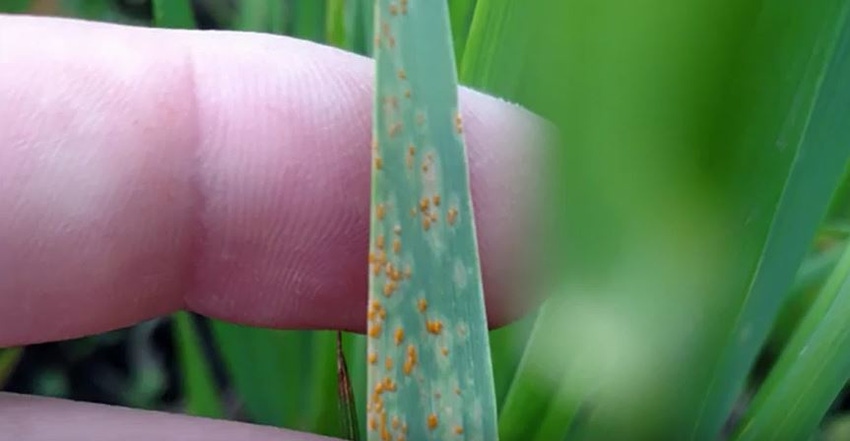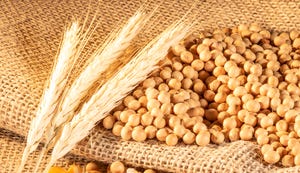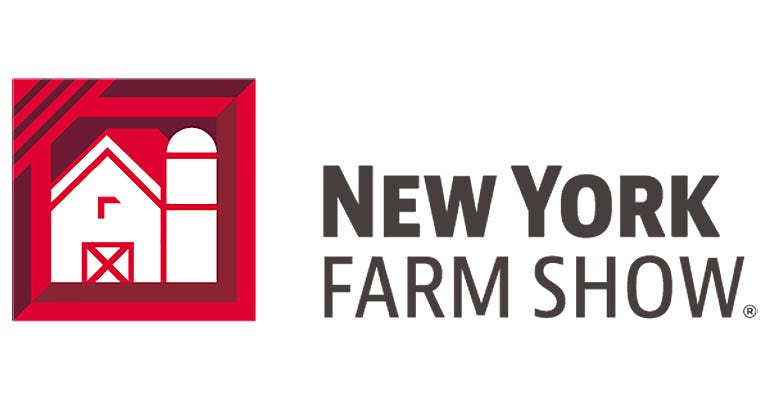March 2, 2017

Pretty much all farmers who grow corn and soybeans can tell you what each of those crops looks like at V6. But do you know the growth stages of small grains? Just as with corn and soybeans, understanding the growth and development of oats, wheat, barley, rye or triticale is just as important when it comes to raising a successful crop. Knowing where a plant is along the growth curve will allow you to better able to manage fertility, disease, and ultimately know when it’s time to harvest.
As with most crops, small grains suffer from many diseases, from crown rust in oats, to fusarium head blight in wheat, to ergot in rye. Those are a few of the big ones, but there are many others, and it can take a little research to understand the diseases that can affect your crop. University of Minnesota Extension has a good website that compiles many of the resources available in the Midwest about small grains diseases. The first lines of defense against most diseases are crop rotation and variety selection.
With some diseases, such as fusarium head blight, corn is an alternate host, so avoiding planting small grains into corn fields is one way to reduce disease risk. In addition, choosing resistant varieties can help reduce yield and test weight loss when disease pathogens are present. For conventional farmers, timely application of the correct fungicide is another way to control or lessen the impact of a disease.
“One issue with small grains in Iowa, and in humid climates,” says Nathan Anderson of Aurelia, “is that you can have some disease problems.” Because they needed good seed quality — whether they would be using the seed for feed, cover crop seed, or sold as a food grade product — he says they used fungicides to control late leaf and head diseases.
Scout, and know growth stages
“That’s where scouting is needed,” he says. “We’re scouting those diseases to see if they’re present, to see if we’re reaching a threshold and to see what our environmental indicators are that might increase the prevalence of the disease if it is present already. Scouting for diseases allows us to make a good decision of whether we need to use those fungicide products or not.”
He says one good resource that allows growers to monitor the weather conditions conducive to fusarium particularly is the Fusarium Head Blight Prediction Center, a joint effort of several universities across the country.
When it comes to selecting a fungicide to apply, there are lots of different products, and each one of those products works differently to control diseases. In most cases, however, you’ll need to understand a little about how the staging of plant growth is different in small grains than it is for corn and soybeans.
Tim Sieren, farming near Keota in southeast Iowa, says understanding the growth stages of small grains takes a little studying up, but this is essential if you are going to be using fungicides. “It’s no different than with corn. You need to understand the V stages of growth so you can know what time to apply the right chemicals,” he says.
Timing fungicide application
With disease management, timing of fungicide application is crucial, so whether you’re combatting crown rust in oats or head scab in wheat, the most important thing is to read the label of the fungicide product. “That’s why they have labels, to tell you the proper time to apply it to get maximum benefit,” he says.
To learn more about small grains production in Iowa, check out Practical Farmers of Iowa’s small grains page. There, you can find research reports, production manuals, articles, blogs, conference presentations and more.
Editor’s Note: Ohde is the research and media coordinator for Practical Farmers of Iowa.
About the Author(s)
You May Also Like






